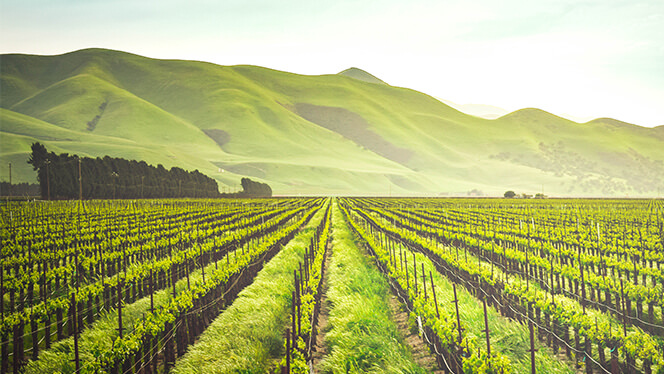Sustainability in Materials
Introduction
Sustainable materials are defined as “materials used throughout our consumer and industrial economy that can be produced in required volumes without depleting non-renewable resources and without disrupting the established steady-state equilibrium of the environment and key natural resource systems.” As keeping the environment healthy has become a higher and higher concern, people have begun looking for ways to take everyday items and turn them into something environmentally friendly. In this post I will look at what materials count as sustainable, what objects could be considered sustainable based on these materials, and what controversies may still exist within this topic.
Types of Sustainable Materials
Sustainable materials are, of course, often made from various plants or natural materials. If a material is not man-made and does not have to go through a process involving chemicals, it is likely to be a more sustainable option. Some examples of sustainable materials include:
- Bamboo
- Cork
- Hemp
- Wool
- Organic Cotton
- Clay
- Beeswax
Examples of Sustainable Items
One thing that you may not have thought of as having the opportunity to be sustainable is clothing. Obviously, we use clothing every day, but a lot of clothing is not used for a person’s whole life, whether because children grow out of their clothes, people wish to change their style, or the clothing simply gets old. The good news is there are lots of brands that work to make their clothing sustainable, and it wouldn’t be terribly difficult to find clothing considered sustainable. For example, clothing that is 100% cotton can often be recycled, and materials like organic hemp or organic linen are made from plants that can thrive many places and in different soils without the use of pesticides. This means these two specific plants can be grown many places without having to clear new land so the crops can thrive, and in the case of hemp, it can actually fertilize the soil, making it better for different crops in the future.
In addition to fashion, many other household every-day items can be replaced with more sustainable ones. Some examples may be:
- Using a reusable water bottle instead of plastic ones
- Biodegradable trash bags (I have found these at McLanahans)
- Reusable coffee filters for coffee machines (like a Keurig)
- Shampoo/conditioner/lotion bars instead of bottles
- Reusable or biodegradable straws
- Rechargeable batteries
- Reusable grocery bags
Many of these items are easy to find, and can be more economically beneficial in the long run. For example, we have to drink water every day. A person who drinks 64 oz of water a day would be using about 3.2 plastic bottles a day, costing them about $4.80 a day. If a person were to replace water bottles with a $40 Hydro Flask, it would take only 8.3 days to make up for the price, and in the process they would be saving 26.67 water bottles in that amount of time. While a reusable water bottle is considerably more expensive in the moment, it takes just over a week to spend more on plastic water bottles than on a reusable one. This goes to show that in many cases it may actually be beneficial for a person to invest in more sustainable items.
Controversy
As with many other areas of sustainability, there is still controversy and truthfully some valid points as to why it is not always better. In fashion, some have argued that many brands really aren’t that sustainable. In fact, there is no set definition as to what sustainable fashion means, and as Eco Age puts it, “at its core fashion is centered around the constant production and use of new items, which is inherently unsustainable.” Additionally, there are cases where a sustainable product may really be much more pricey than the non-sustainable option, and therefore don’t sell as well in stores. Another way sustainable products may not be great is when they really trade one non-sustainable trait for another. One example of this is when McDonald’s attempted to replace plastic straws with paper ones. Customers began pointing out that the plastic ones can be recycled whereas the paper ones cannot, and while reducing the use of plastic straws may benefit some wildlife, increasing the use of paper straws involves destroying more wooded habitats for paper production. In addition to the change really just being a tradeoff of what wildlife was harmed, the paper straws tended to perform poorly. Making sustainable materials and objects can be a lot more complicated than one would think, and the entire process of acquiring and making an object must be considered.
Conclusion
There are many everyday objects we use that have greener, more sustainable options than the ones typically used. In the case of plastic water bottles, it seems an easy choice to replace them with reusable one. With only about 9% of recycled plastic actually being recycled, it is even more important to come up with ways to reduce plastic use. However, there are times when a sustainable option may not really be that sustainable, or is too pricey for the average person to afford. As we continue to learn how to make products more sustainable, we must look at both the successes and failures to learn and create a better future. As a consumer, one of the best ways to help with this issue is to simply look into the products you are buying; to understand how a product is made and what it is made from. There may be some very small changes you can make that can help improve our world.
Sources:
http://sustain.rutgers.edu/what_are_sustainable_materials#:~:text=Sustainable%20materials%20are%20materials%20used,and%20key%20natural%20resource%20systems.




